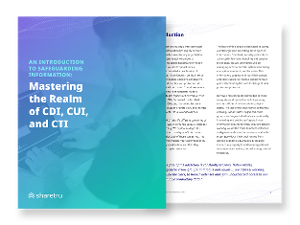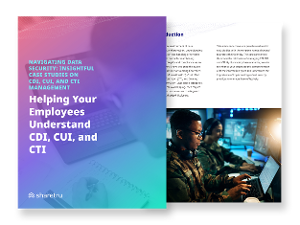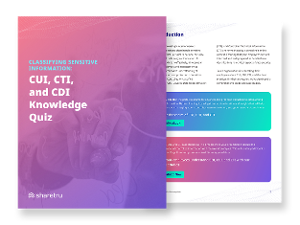Critical to safeguarding CUI in aerospace and defense, International Traffic in Arms Regulations (ITAR) and Export Administration Regulations (EAR) are essential for compliance and protection. Understanding these regulations is crucial for industry stakeholders, as they play a vital role in controlling and safeguarding CUI.
Adhering to ITAR and EAR requirements is fundamental for defense contractors, making sure of adherence to lawful government purpose and oversight responsibilities.
ITAR Compliance and CUI
In the aerospace industry, ITAR plays a crucial role in the protection of CUI. ITAR regulations mandate that U.S. companies, research labs, universities, and other entities engaged in the manufacturing, exporting, or brokering of defense articles or services on the United States Munitions List (USML) must register with the Directorate of Defense Trade Controls (DDTC) and adhere to stringent guidelines. (1)
This registration is crucial as it is the first step towards ensuring ITAR compliance, which includes obtaining prior authorization for ITAR-controlled transactions, adopting an ITAR Compliance Program, and implementing robust tracking and security measures for ITAR-controlled items.
ITAR's stringent requirements serve multiple purposes: they prevent unauthorized access to sensitive information, maintain U.S. technological leadership in defense and aerospace, and protect national security. By adhering to ITAR, companies can also avoid severe penalties and negative consequences of noncompliance, such as fines up to $1 million and imprisonment, as seen in cases like Airbus and Bright Lights USA, Inc. (2, 3)
EAR Regulations and CUI
Similar to ITAR, the Export Administration Regulations (EAR) are critical for safeguarding CUI in the defense industry. EAR controls the export of dual-use items – goods and technologies primarily commercial in nature but potentially useful in military applications. Compliance with EAR ensures that sensitive information related to national security and foreign policy interests is securely managed and does not fall into the wrong hands.
For defense industry contractors handling CUI, adhering to EAR involves understanding and classifying items under the Export Control Classification Number (ECCN), securing necessary licenses, and maintaining detailed records. This is vital for not only protecting sensitive information but also for maintaining a company's eligibility to participate in government contracts and other opportunities that demand adherence to these regulations. (1)
Integration of ITAR and EAR in Industry Compliance
The integration of ITAR and EAR compliance is a unified effort that enhances the overall security posture of companies in the aerospace and defense sectors. This involves a thorough understanding of the types of equipment and services subject to these regulations, such as military aircraft, missiles, satellites, drones, and their components.
Companies must also engage in continual education and training for their employees so that everyone involved is aware of and can effectively navigate the complexities of these regulations.
By implementing ITAR-compliant cloud services and adhering to EAR's rigorous guidelines, companies can achieve a high level of data protection, avoid significant penalties, and maintain their competitiveness in the market. These regulations also extend to the entire supply chain, emphasizing the importance of comprehensive compliance across all levels of operation.
ITAR and EAR vs. CMMC
We should emphasize that both ITAR and EAR focus on the regulation of defense-related articles, services, and dual-use technologies to prevent unauthorized exportation, thus ensuring national security. These regulations mandate stringent control over the handling, sharing, and exporting of sensitive materials, requiring organizations to obtain appropriate licensing, maintain meticulous records, and adhere to specific procedural guidelines.
In short, ITAR and EAR are geared towards controlling the physical and digital dissemination of defense and dual-use technologies across borders, emphasizing the "what" aspects of compliance.
Conversely, CMMC is designed to enhance the protection of CUI within the defense industrial base's network environments. CMMC requirements introduce a tiered cybersecurity framework that organizations must implement and certify against, focusing on the "how" aspects of safeguarding sensitive defense information from cyber threats.
This framework ranges from basic cyber hygiene to advanced protections, aiming to fortify the defense supply chain against increasingly sophisticated cyber and information warfare tactics. While ITAR and EAR regulate the dissemination of sensitive information and technologies to protect national interests, CMMC compliance ensures that the systems handling this information are secure and resilient against cyber intrusions, creating a comprehensive compliance ecosystem for defense contractors and suppliers.
Sources:
1. https://clearedsystems.com/the-importance-of-itar-compliant-cloud-services-for-defense-and-aerospace-industries/
2. https://www.williamsmullen.com/news/recent-itar-case-sends-important-message-smallmidsized-government-contractors
3. https://www.justice.gov/usao-dc/pr/airbus-agrees-pay-over-39-billion-global-penalties-resolve-foreign-bribery-and-itar-case




.png?width=193&height=250&name=Sharetru%20ITAR%20Guide%20(2).png)
